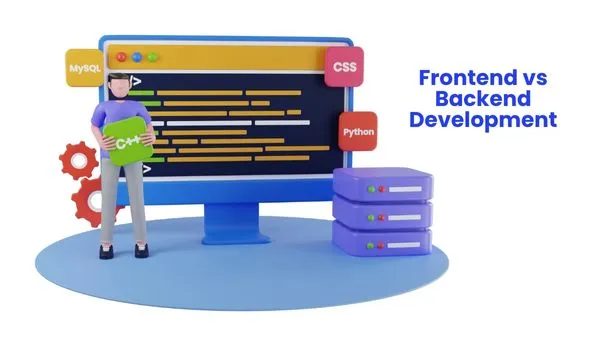What Technologies are Commonly Used in Web Development
To build a website, you need to understand the key concepts, tools, and the most popular web development technologies used by modern developers. Most commonly used website and web app technologies are the basis of practically every website and web app you can think of, whether it be an e-commerce store, social platform, online bank, or anything else.
In this blog, we will discuss the common frontend development technologies, backend technologies, popular web development frameworks, and introductory tools that contribute to modern web development.
Understanding Web Development: Frontend vs. Backend

The frontend is simply what the user sees: the layout, buttons, graphics, etc. The backend is everything else: databases, servers, application logic, etc. Both the frontend and backend work together to create an effective solution for the user. In web development, there are common tools and technologies for frontend websites: HTML, CSS, and JavaScript; and for backend websites, there are Python, PHP, Node.js, etc.. Being able to use both is critical for building dynamic and functional websites and applications.
Why Do Web Development Technologies Matter?
Web development is more than code. It is user experience, security, speed, and ensuring that it is SEO-friendly and responsive. Choosing a web development framework and technology helps:
- Improve user experience.
- Create scalable apps.
- Optimize site performance.
- Increase maintainability.
- Improve development workflow.
Let’s explore the most common and cutting-edge frontend and backend technologies right now.
Frontend: Common Web Development Technologies for UI/UX
The front-end layer consists of everything that the user sees and interacts with. It contains the layout, navigation, buttons, forms, and all the other visual elements that are present. These technologies are what allow us to create responsive, interactive, and visual web interfaces.
1. HTML5 (Hypertext Markup Language): HTML has always been, and will always be, a staple of every website. It structures the web page and allows multimedia elements to be inserted natively (without 3rd-party plugins).
Why is this important?
- Good semantic tags are great for SEO.
- Native audio/video support.
- Works with all modern-day browsers.
2. CSS3 (Cascading Style Sheets): CSS (Cascading Style Sheets) is used for styling and layout. CSS3 has added features like Flexbox and Grid, transitions, and other animations that allow pages to be interactive and responsive for mobile devices.
Modern Add-Ons:
- SASS and LESS (CSS Preprocessors) offer better code management.
- Tailwind CSS: A very popular utility-first CSS framework.
3. JavaScript (JS): JavaScript (JS, just JS, or “JavaScript”) is hands down the most must-have common web development technology for front-end development. JavaScript allows content to be dynamic, real-time, and interactive.
Key Libraries & Frameworks:
Vue.js: lightweight, portable, and flexible when creating a modern app.
Angular: A framework made available by Google, which is typically ideal for enterprise app development
All of these popular front-end web development frameworks provide the same basic final output (they’re just implementations of a final rendering). You have reusable components, great rendering speeds, easy testing, etc.
4. WebAssembly (Wasm): While it might not be widely used yet, WebAssembly is gaining traction for performance-critical use cases, like video editing or games in the web browser.
Backend: Web Development Tools and Technologies Behind the Scenes
In web application development, front-end development includes everything that users see, while back-end development provides all of the “logic” behind the screen, including interaction with the database, business logic, and server-side calculations. Here are some important backend technologies used in web development.
1. Programming Languages for Backend Development:
Node.js: Node.js is a server-side programming environment for JavaScript with non-blocking, event-driven I/O functionality powered by Chrome’s JavaScript V8 Engine. V8 has optimized performance and memory efficiency.
Typical use cases for Node.js: APIs, real-time applications (e.g., chat, notifications), single-page applications (SPAs).
Python: Hailed for its simplicity and breadth of libraries, Python has become a popular language for web development, particularly due in part to the Django and Flask frameworks.
- So why Python?
- Clear syntax.
- Great for artificial intelligence, machine learning, and data-heavy applications.
PHP: PHP is an amazing programming language and is behind powerful platforms such as WordPress, Joomla, and Magento. Although it has had its fair share of criticism, its 900 million lives on reputable web servers in 2021 speak volumes.
Ruby: Ruby, with the Ruby on Rails framework, employs a philosophy of convention over configuration that helps developers get their minimum viable products (MVPs) out the door faster.
Databases: Data storage is vital. Depending on the project, developers choose between SQL and NoSQL databases.
MySQL/PostgreSQL: Traditional relational databases.
MongoDB: Document-based NoSQL DB, perfect for flexible schemas.
Redis: In-memory database for caching and fast access to data.
Also Read: The Role of Cybersecurity in Web Development
Popular Web Development Frameworks in 2025
Frameworks speed up development by providing reusable components, standards, and security. Let’s take a look at some popular web development frameworks in the frontend and the backend.
Frontend Frameworks:
- React.js: Generated a UI efficiently, and is backed by Meta.
- Vue.js: Easy to integrate into existing projects, ideal for small to medium-sized apps.’
- Angular: Comprehensive MVC framework built for enterprise applications.
Backend Frameworks:
- Express.js: A Minimalist framework for Node.js based on RESTful APIs.
- Django (Python): Safe, scalable, and batteries-included.
- Ruby on Rails: Easy to work with, quick to develop.
- Laravel (PHP): Has elegantly designed syntax and a large active community supporting it at the time.
All frameworks and tools in web development are designed to help improve code quality, reduce development time, and maintainability.
Tools That Power Modern Web Development
In addition to languages and frameworks, there are numerous tools that streamline and improve web development processes.
1. Version Control
Git: The industry standard.
GitHub/GitLab/Bitbucket: Cloud-based code repositories.
2. Package Managers
NPM: Node package manager for JavaScript.
Yarn: A Faster alternative to npm.
3. Build Tools
Webpack: Module bundler for modern JS applications.
Vite: Next-gen frontend build tool that is faster and leaner.
Gulp: Automates repetitive tasks like minification and image optimizations.
4. Containerization & DevOps Tools
Docker: Containers to ensure consistency of environments.
Kubernetes: Orchestration of containerized applications.
CI/CD Tools: Jenkins, GitHub Actions for automated testing and deployment.
Latest Technologies in Web Development for 2025
The digital universe is transforming rapidly. By keeping up with the trends and technologies in web development, you are more likely to come up with innovative and competitive solutions.
1. AI-Driven Development Tools: AI will change the way developers program, test, and debug. Tools like GitHub Copilot, CodeWhisperer, and Tabnine all help developers by offering code snippets and telling them when there are bugs in their code.
2. Progressive Web Apps (PWAs): Progressive Web Apps are the ultimate hybrid of web and mobile applications. They work offline, they load instantly, and they deliver app-like experiences.
Some of the Key Features of a PWA:
- Service workers.
- Push notifications.
- Offline caching.
3. Jamstack Architecture: JavaScript, APIs, and Markup: JAMstack allows fast, secure, and scalable static sites transformed with tools like Next.js, Gatsby, and Netlify.
4. Web3 and Decentralized Applications (dApps): The emergence of blockchain and Web3 development is creating applications like decentralized finance (DeFi), NFTs, and smart contracts.
Most common tech stack:
Ethereum, Solidity, MetaMask.
web3.js, ethers.js.
Final Discussion Over Building the Future with Robust Technologies
Web development in 2025 is smart, fast, and connected. Knowing and integrating the common web development technologies, be it responsive frontend or secure backend, allows for long-term success.
When developers uphold their skills with both frontend and backend technologies, adopt popular web development frameworks, and consistently keep up to date with the latest technologies in web development, high performance, scalability, and modernity can easily be incorporated into their web solutions.
Finding the right talent who understands the common web development technologies and stays up-to-date with industry trends is crucial for your business’s success. Whether you need experts in frontend and backend technologies or professionals experienced with popular web development frameworks, trusted web developer recruiters can make all the difference.
Contact Time Agency Group today to connect with top-tier developers ready to build your next digital solution.
FAQs on Common Web Development Technologies
Q1. What are the most widely used technologies for web development?
The most used technologies are HTML, CSS, JavaScript, Node.js, Python, React, and Django.
Q2. What is the best frontend framework in 2025?
The best frontend framework is React.js, with Vue.js and Angular closely behind for their niche purposes.
Q3. What is the most popular backend language?
Node.js and Python are tied in first place for their flexibility and ecosystem.
Q4. Are Progressive Web Apps better than native apps?
Progressive Web Apps offer an incredible user experience and offline capability without the use of the app store.
Q5. Is PHP still a popular web development language?
Yes, PHP is still used, especially in projects that utilize WordPress.
Q6. What is the best database for web development?
That depends on the use case, but in 2025, MongoDB (NoSQL) and PostgreSQL (SQL) are both solid choices.
Q7. Is Django or Laravel easier to learn?
Django is easier for someone who knows Python, but Laravel is a smooth beginner experience if you’re looking to learn PHP.
Q8. What tools will help with development speed?
Tools such as Git, npm, Webpack, Docker, and CI/CD tooling (such as GitHub Actions) are going to help you develop faster and acquire automation.
Related Article: Web3 Explained: The Future of a Decentralized Internet






